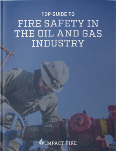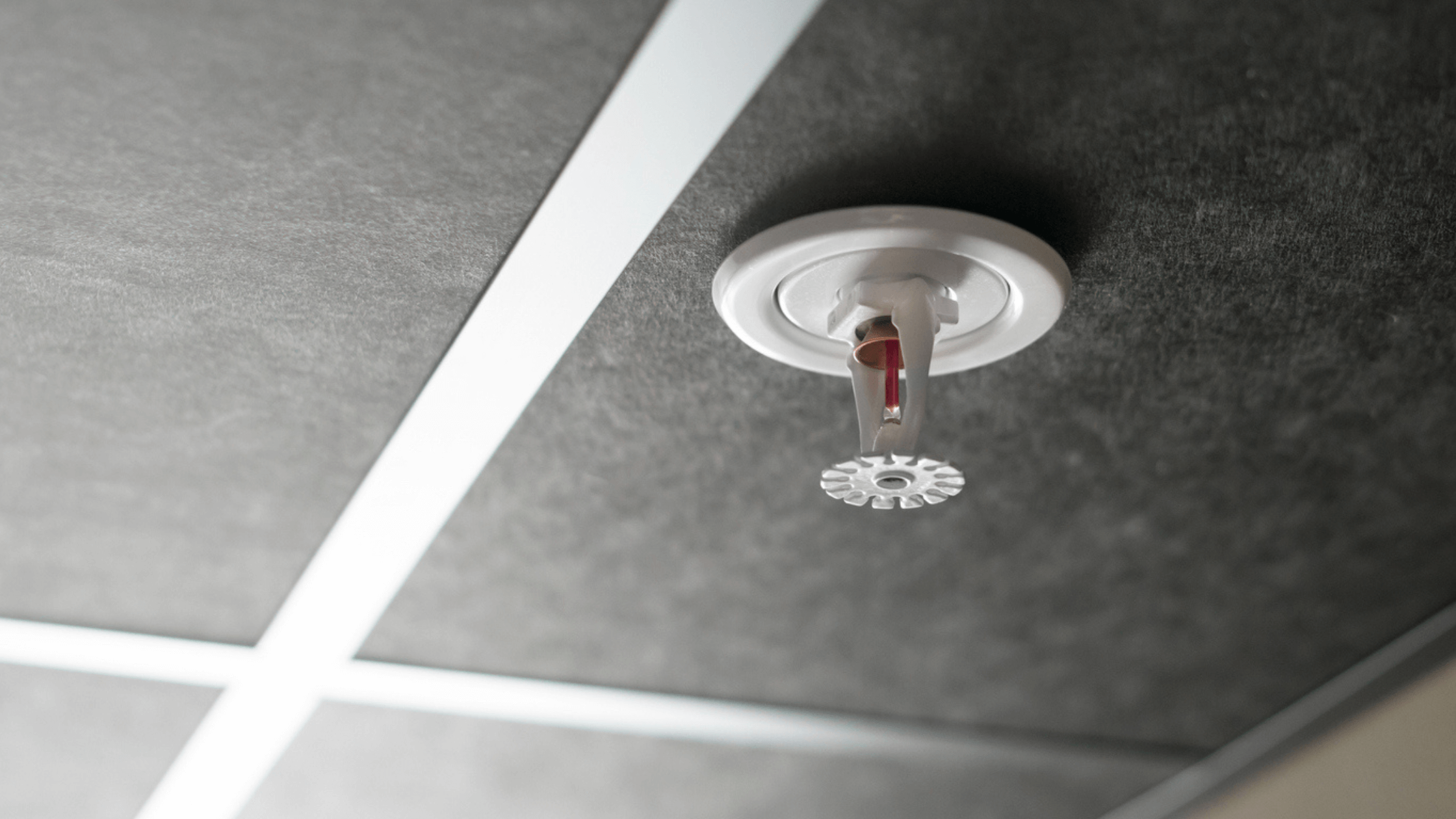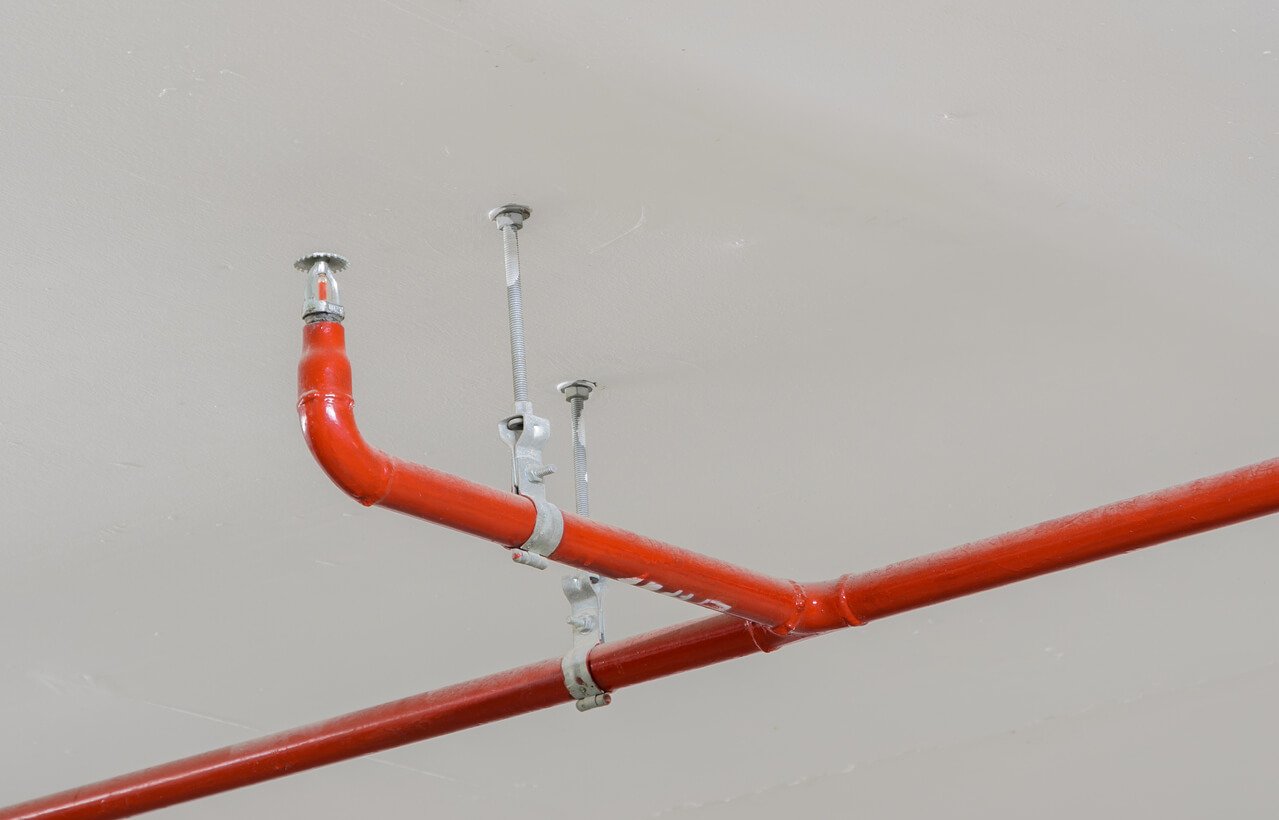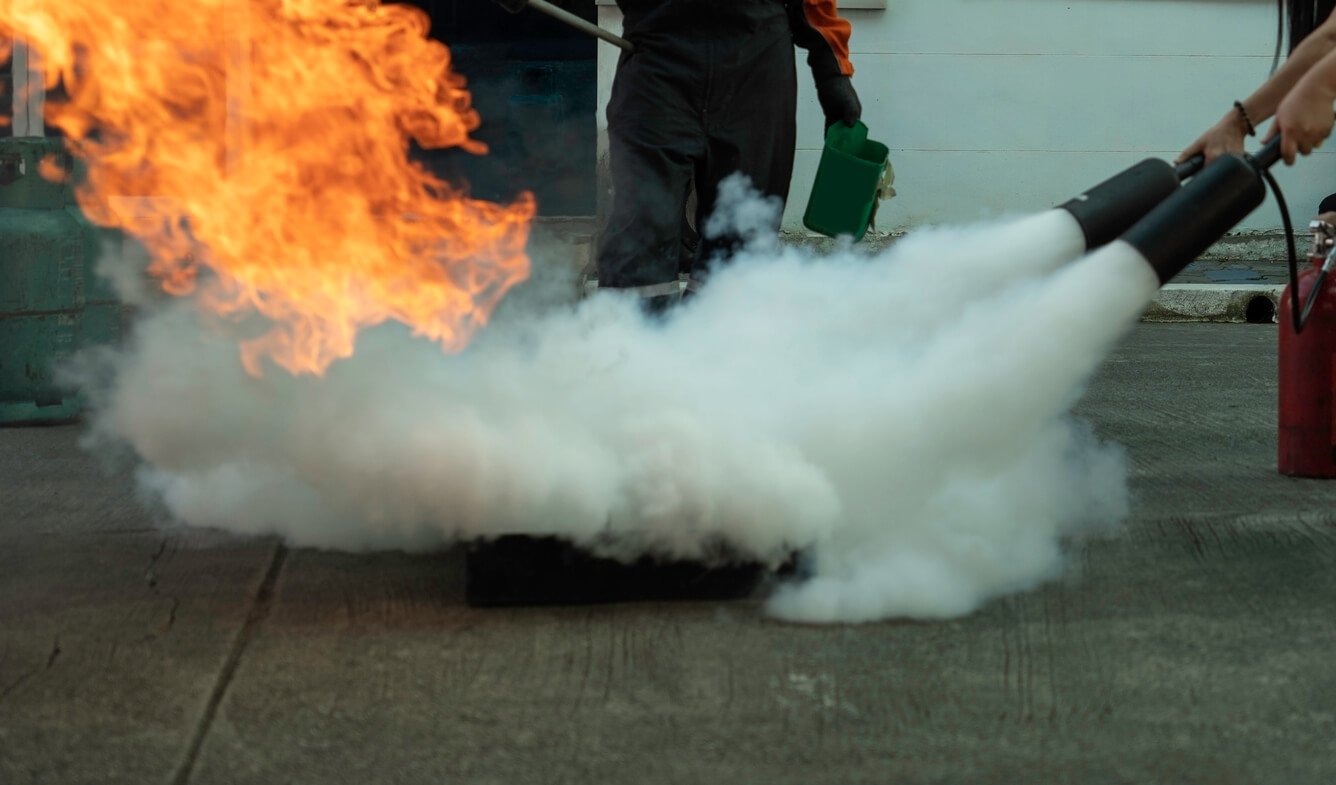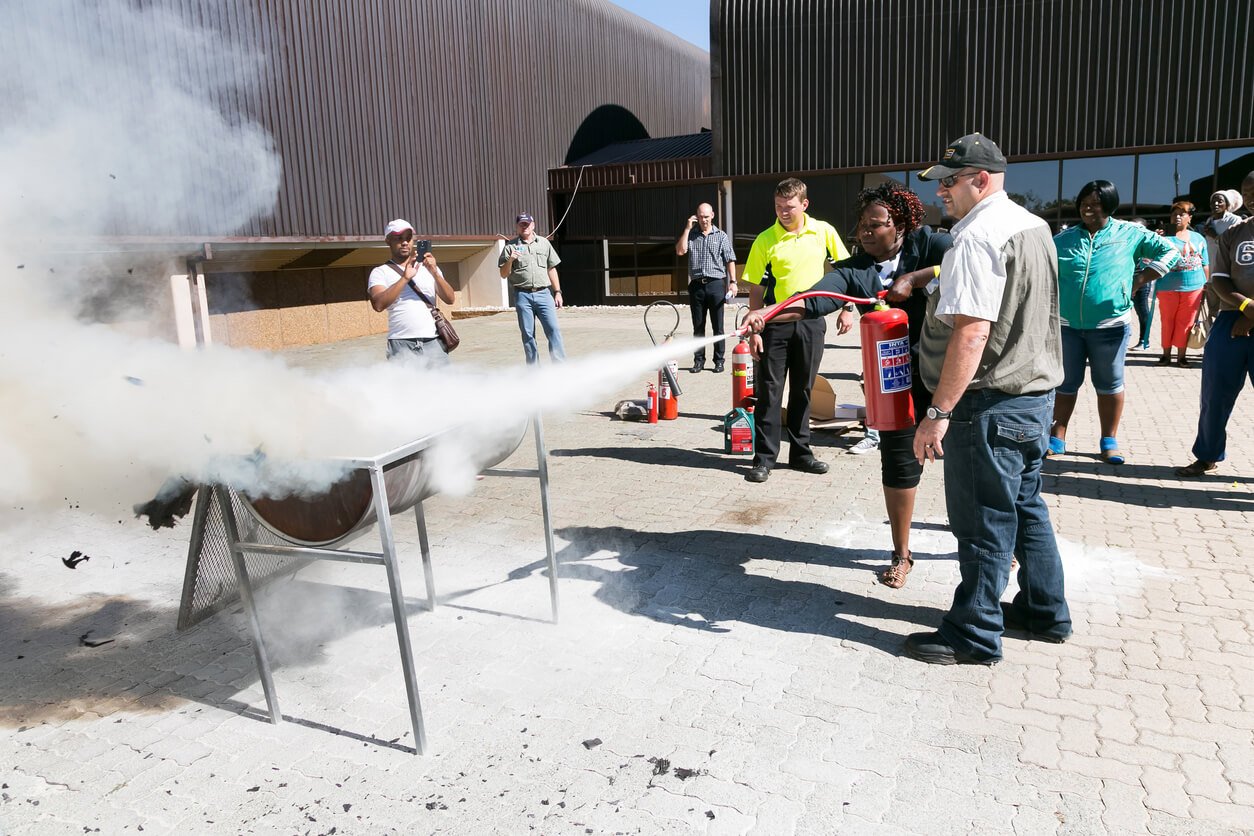What Makes a Quality Building Sprinkler System?
The four most critical factors are sprinkler head specifications (temperature ratings and response times), appropriate piping materials for your environment, adequate water supply with proper pressure calculations, and professional installation meeting NFPA 13 standards and seismic requirements.
If you’re in the market for building sprinkler systems, you might be wondering:
- What features matter most?
- What type is best for my building and equipment?
- What am I required to have by code?
We’ve got you covered.
In a fire emergency, the right sprinkler system can significantly reduce the impact of fire damage to your property, operations, and most importantly, the safety of occupants.
For project managers and building owners, understanding what makes a quality building sprinkler system is essential for making informed decisions that protect both your investment and your people.
Key Takeaways
- Sprinkler system type selection (wet pipe, dry pipe, pre-action, deluge) must match your building's specific environmental conditions and protection needs
- Use high-quality sprinkler heads with correct temperature ratings and response times to ensure fast, effective fire suppression
- Ensure proper piping materials and accurate water supply calculations to maintain long-term system reliability
- Professional installation following NFPA 13 standards and seismic requirements protects your investment and ensures code compliance
Understanding Sprinkler System Types (And When To Use Them)
Selecting the right type of automatic fire sprinkler system is the foundation of effective fire protection for commercial buildings. Each system type serves specific applications and building requirements:
- Wet pipe sprinkler systems are the most common and cost-effective option for most commercial applications. These systems keep water constantly filled in the pipes, allowing for immediate water delivery when sprinkler heads activate. Wet pipe systems work best in heated buildings where freezing is not a concern, making them ideal for office buildings, retail spaces, and most indoor commercial environments.
- Dry pipe systems address the challenges of unheated spaces where water-filled pipes could freeze and burst. Pipes are filled with pressurized air or nitrogen, which is released upon activation to allow water flow. Dry pipe systems are essential for warehouses, parking garages, loading docks, and other areas exposed to freezing temperatures.
- Pre-action systems offer dual protection by requiring both sprinkler head activation and a separate detection system signal before water flows. Pre-action systems are particularly valuable in facilities housing sensitive equipment, documents, or materials where water damage could be as costly as fire damage (e.g., data centers, libraries, museums, and pharmaceutical facilities).
- Deluge systems feature open sprinkler heads without individual heat-activated elements, designed to discharge water simultaneously across an entire area when the detection system activates. Aircraft hangars, chemical storage facilities, and industrial processing areas commonly use deluge systems for their aggressive fire suppression approach.
According to the National Fire Protection Association, properly installed and maintained automatic sprinkler systems are effective in 89% of fires large enough to activate them.
The choice of system type directly impacts this effectiveness, making proper selection critical for optimal fire protection performance.
4 Key Factors To Consider In Your Building Sprinkler System
Once you've determined the appropriate system type for your building, the quality and specifications of individual components will determine your system's long-term performance and reliability.
These four factors separate high-quality installations from basic systems that may not deliver when you need them most.
1. Sprinkler Heads
While sprinkler heads are the most visible part of a fire protection system, their function is far more critical than appearance. Sprinkler heads are the most visible component of your fire sprinkler system, but their importance extends far beyond aesthetics. The quality and appropriate selection of sprinkler heads directly impact response time, water distribution patterns, and overall system effectiveness.
Start by evaluating the temperature ratings. Standard sprinkler heads activate at 155°F, but commercial buildings with specific heat sources or ambient temperatures may require higher-rated heads.
For example, warehouses with skylights, commercial kitchens, or manufacturing facilities often need 200°F or higher rated heads to prevent accidental activation while ensuring proper response during actual fire conditions.
Evaluate the response time index (RTI), which measures how quickly a sprinkler head reacts to heat. Quick-response heads have RTI values below 50, while standard response heads range from 80-350. For most commercial applications, quick-response heads provide faster activation and better fire control, particularly in spaces with high ceilings or areas where rapid fire spread is a concern.
Water distribution patterns vary by sprinkler head type and significantly affect coverage and suppression effectiveness. Standard spray heads work well for most commercial applications, while extended coverage heads can protect larger areas with fewer heads in appropriate settings.
Quality indicators include UL listing, proper manufacturer documentation, and compatibility with your specific system pressure and flow requirements. Avoid generic or uncertified sprinkler heads that may not perform consistently or meet building code requirements.
2. Piping Materials
Selecting the right piping material for your sprinkler system directly impacts its longevity, maintenance requirements, and long-term reliability. Poor piping choices can lead to corrosion, leaks, and system failures.
A common choice for commercial fire sprinkler systems is steel piping as it offers excellent durability and pressure handling capabilities. Schedule 40 black steel pipe is the standard for most applications, while Schedule 10 steel offers weight savings in certain applications.
However, steel piping requires proper corrosion protection, particularly in systems with aggressive water chemistry or high oxygen content.
CPVC (Chlorinated Polyvinyl Chloride) piping offers significant advantages in terms of corrosion resistance and installation speed for appropriate applications. CPVC systems typically cost less to install and maintain than steel systems, while providing excellent performance in most commercial environments.
However, CPVC has temperature and pressure limitations that make it unsuitable for certain high-hazard applications or systems requiring high-pressure ratings.
Copper piping provides good corrosion resistance and long-term reliability but comes with higher material costs. Copper systems work particularly well in buildings with corrosive water supplies or where system aesthetics matter. The higher initial investment can be offset through reduced maintenance costs and extended system life.
3. Water Supply
Your water supply system determines whether your sprinkler system will have adequate pressure and flow when needed. Insufficient water supply represents one of the most common causes of sprinkler system performance issues, making proper evaluation and design critical for effective fire protection.
Water flow calculations must account for simultaneous sprinkler operation, system friction losses, and elevation changes throughout your building. NFPA 13 requires hydraulic calculations that demonstrate adequate water supply for the most demanding fire scenarios your building might face. These calculations consider factors including occupancy hazard classification, ceiling height, and commodity storage arrangements.
Water pressure requirements vary significantly based on system type and building characteristics. Most commercial wet pipe systems require minimum residual pressures of 7-15 PSI at the most remote sprinkler head, but higher-hazard occupancies may require significantly higher pressures. Dry pipe and pre-action systems typically require higher supply pressures to account for additional friction losses and air pressure requirements.
It’s also critical to evaluate the source of your water supply and how it’s assessed. Municipal water supply evaluation includes analyzing available static pressure, residual pressure at required flow rates, and seasonal variations that might affect system performance.
Many building owners assume that the municipal water supply will always be adequate, but factors including water main sizing, elevation differences, and peak demand periods can significantly impact available pressure and flow.
Private water supply systems, including fire pumps, storage tanks, and private wells require careful sizing and design to ensure reliability. For example, fire pumps must be sized to meet both sprinkler system and fire department connection requirements, with appropriate backup power systems for continued operation during utility outages.
4. Proper Installation Standards
Installation quality often determines whether your sprinkler system will perform as designed when facing an actual fire emergency. Even the highest-quality components can fail if not installed according to proper standards and best practices.
NFPA 13 compliance provides the foundation for proper sprinkler system installation in commercial buildings. This standard covers everything from pipe sizing and support requirements to sprinkler head spacing and hydraulic calculations.
Seismic requirements have become increasingly important as building codes evolve to address earthquake safety concerns. Proper seismic bracing and flexible connections prevent system damage during seismic events, ensuring continued fire protection capability when other building systems may be compromised.
Pipe support and hanger requirements ensure system integrity under normal and emergency conditions. Proper support spacing, hanger types, and attachment methods prevent pipe sagging, joint stress, and system damage that could compromise performance. Support systems must account for thermal expansion, seismic forces, and the additional weight of water-filled pipes.
When you work with a professional fire safety team, they maintain detailed records of pipe routing, sprinkler head locations, and system specifications that prove invaluable for future maintenance and modifications.
Remember, the quality of the installation directly impacts your system's insurance acceptance and premium costs, code compliance, and long-term performance. Working with experienced, certified fire protection contractors ensures your system meets all requirements and provides reliable fire protection for years to come.
Partner with Fire Protection Experts
Choosing the right building sprinkler system requires expertise in system design, component selection, and installation standards that most project managers and building owners don't encounter regularly.
The four key factors covered in this guide provide a foundation for informed decision-making, but successful implementation depends on working with qualified fire protection professionals who understand your specific requirements and local code requirements.
Impact Fire's experienced team helps project managers and building owners navigate sprinkler system selection, design, and installation with confidence. Our certified technicians ensure your system meets all applicable codes while providing optimal protection for your specific building and occupancy requirements.
Contact our fire protection experts today to discuss your building sprinkler system needs and receive a comprehensive evaluation of your fire protection requirements.

